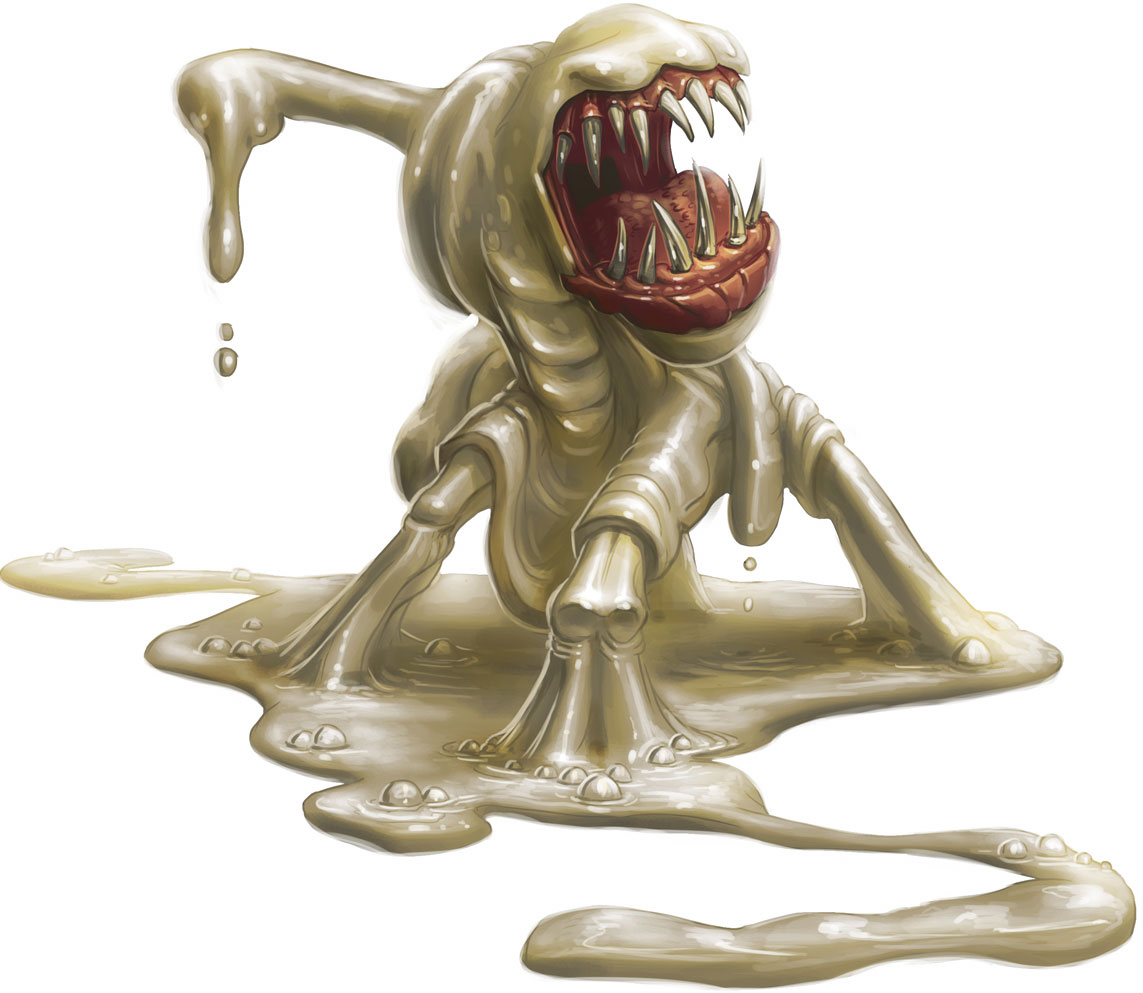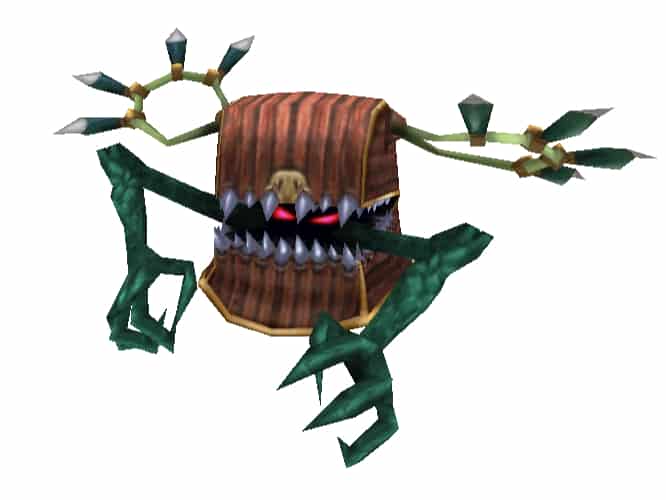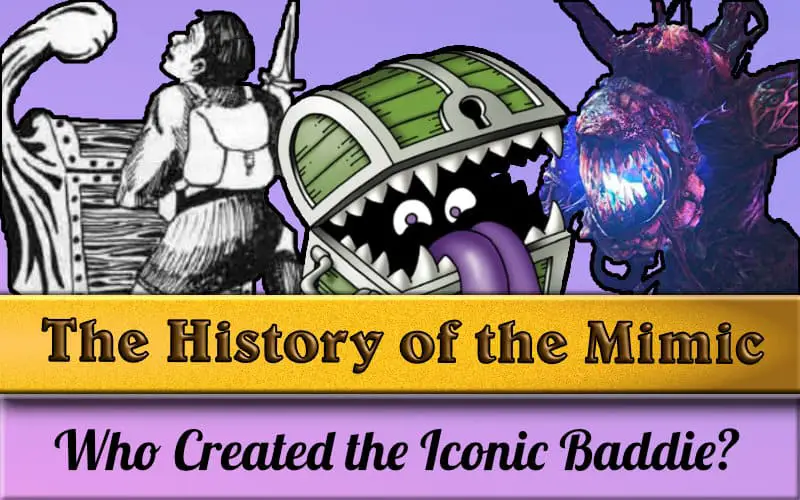Mimic’s have been seen in role playing games for decades but where did they come from? We take a look at the long history of the Mimic to figure out how they became such a staple in the gaming world.
Tip-toeing closer to treasure chests that seem “a little too convenient” is a feeling most gamers know all too well. But who instilled this fear? Why is it that so many adventure games have incorporated Mimic’s in some shape or form? Before we answer that, let’s take a look at what exactly is a mimic.
Speaking of fear, check out the best horror board games and the best zombie board games.
What is a Mimic?
Typically a mimic is defined as a seemingly inanimate object that transforms into a monster at the last second to surprise the player character. A shape-shifting baddie whose only purpose is seemingly to lure the player closer for a surprise attack. Typically this is in the form of a sharp-toothed treasure chest (like in our own GameHungry logo). Although they’ve been known to inhabit any seemingly normal object in the RPG world.
Who Invented Mimics?
The term “Mimic” and it’s first depiction are credited to D&D co-founder Gary Gygax in 1974. It wouldn’t be until 3 years later that the first drawing of a mimic appears in the D&D Monsters Manual.

Since it’s inception the Mimic has seen many changes. From the slime-fisted depiction seen in the first Monster Manual to a plethora of different adaptations across the years.
The History of the Mimic
After it’s first inception, nobody thought that this iconic enemy would still be a staple in video games decades later. But from original D&D rulebooks to more recent games like Prey and Call of Duty: Cold War, mimics have found their way into the modern gaming landscape.
In Dungeons and Dragons 1977 Monster Manual mimic’s were described as subterranean creatures which cannot stand the light of the sun and are able to perfectly mimic stone or wood. Commonly taking the form of a treasure chest or a door. With a large pseudopod for bludgeoning it’s prey.
Fast forward to the second edition of D&D in the 1989 Monster Compendium, the origin of the mimic is written. This volume states that Mimics were created by wizards to fend off treasure hunters, and that some mimics could speak a muddied version of the original wizards language.
A mimic’s true form is described as an amorphous, brown mass with four beady red eyes and one large sharp-toothed mouth. A mimic can extend pseudopods, up to four at once, to move, manipulate, or even wield objects while in this form.

Once other game franchises started to use Mimics in their games, the definition of what they were started to change. The most common depiction of a mimic is a sharp-toothed treasure chest. One of the first appearances of this type of mimic was in the 1988 RPG Dragon Quest 3.

From there Mimic’s took on a life of their own. Appearing in iconic franchises such as Everquest, Final Fantasy, Diablo, and many many more. Each adaptation with new definitions of what a Mimic could be.

Mimics have been known to take forms other than the common treasure chest. In Dragon Quest a version can be found in urns called Urnexpected. In Zelda: The Ocarana of Time Door mimics can be seen impersonating doors until Link gets close enough to attack. Fortnite has a “mimic’s shield” cosmetic item that resembles a mimic transforming into a shield.

Final Fantasy has had many forms of Mimic’s throughout the series. Mostly appearing as chests that would sprout teeth and arms. They originally appeared in Final Fantasy 2 under the name “Monsters-In-A-Box”. It wasn’t until Final Fantasy IX that they were renamed to Mimics.

Some of the more creative uses of Mimics appear in modern games. In Dark Souls, mimics would sprout long legs and arms to entrap the player character. In Call of Duty Cold War they would ambush the player disguised as rare weapon drops.
Related: What is a Meeple?
Which Games Use Mimics?
The amount of video and board games that have featured mimics continues to grow every day. Here’s some of the more notable franchises that have used Mimics as a type of enemy.
- Dunegons & Dragons
- Baldur’s Gate
- Dragon Quest
- Final Fantasy
- Toejam and Earl
- Diablo
- Torchlight
- Borderlands
- Dark Souls
- Monster Sanctuary
- Fortnite
- Call of Duty: Cold War
- and many many more…
Although the history of the mimic was written in 1977, it’s folklore continues to grow with every new iteration. What started out as a glue covered treasure chest eventually evolved into a blob-like creature that can mimic nearly anything in the room. Video games love to use mimics to add an element of surprise so players never feel too safe. Let us know in the comments below what your favorite iteration of the iconic baddie is.

